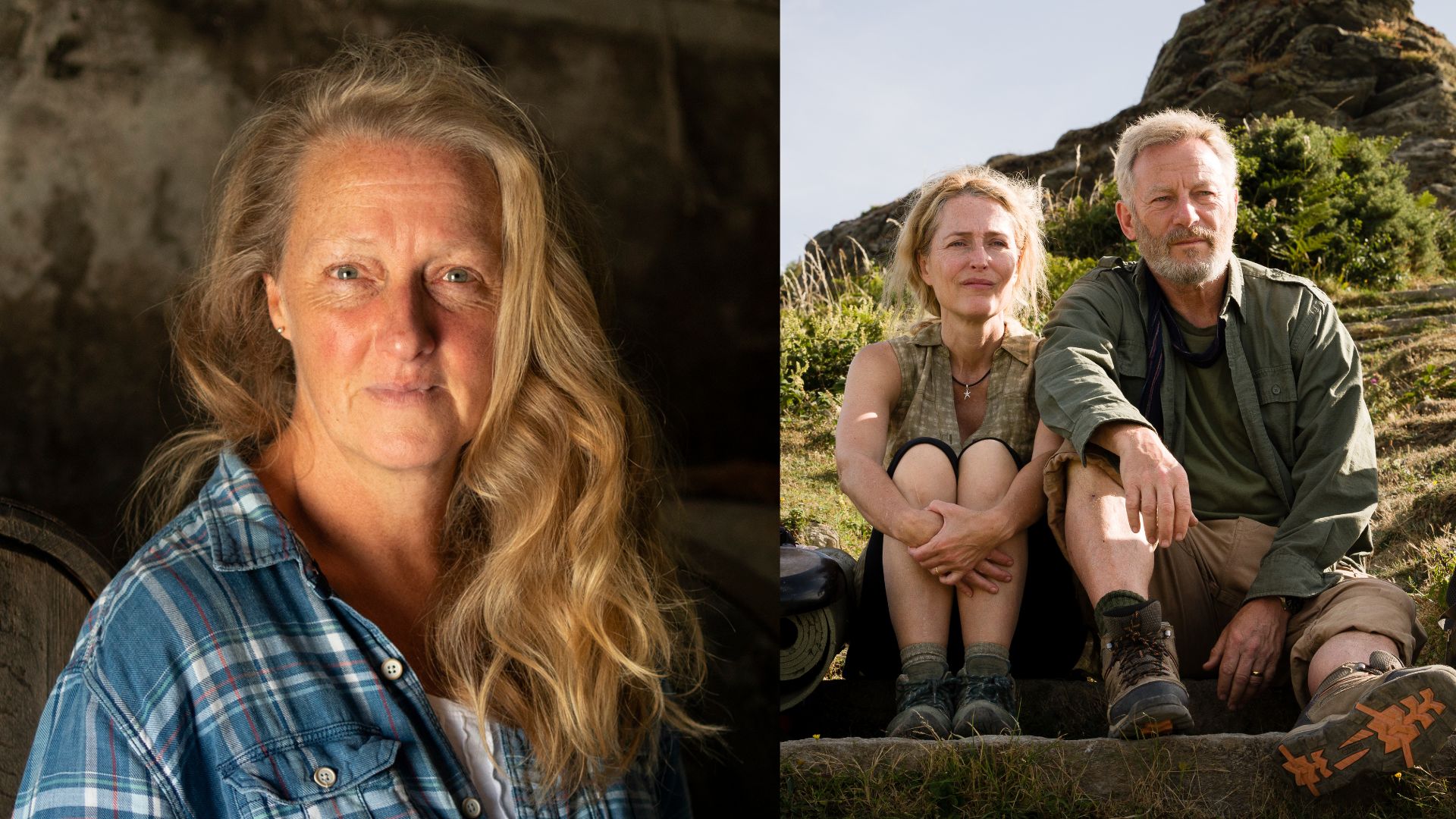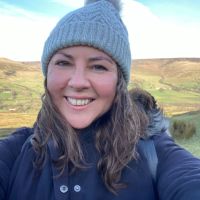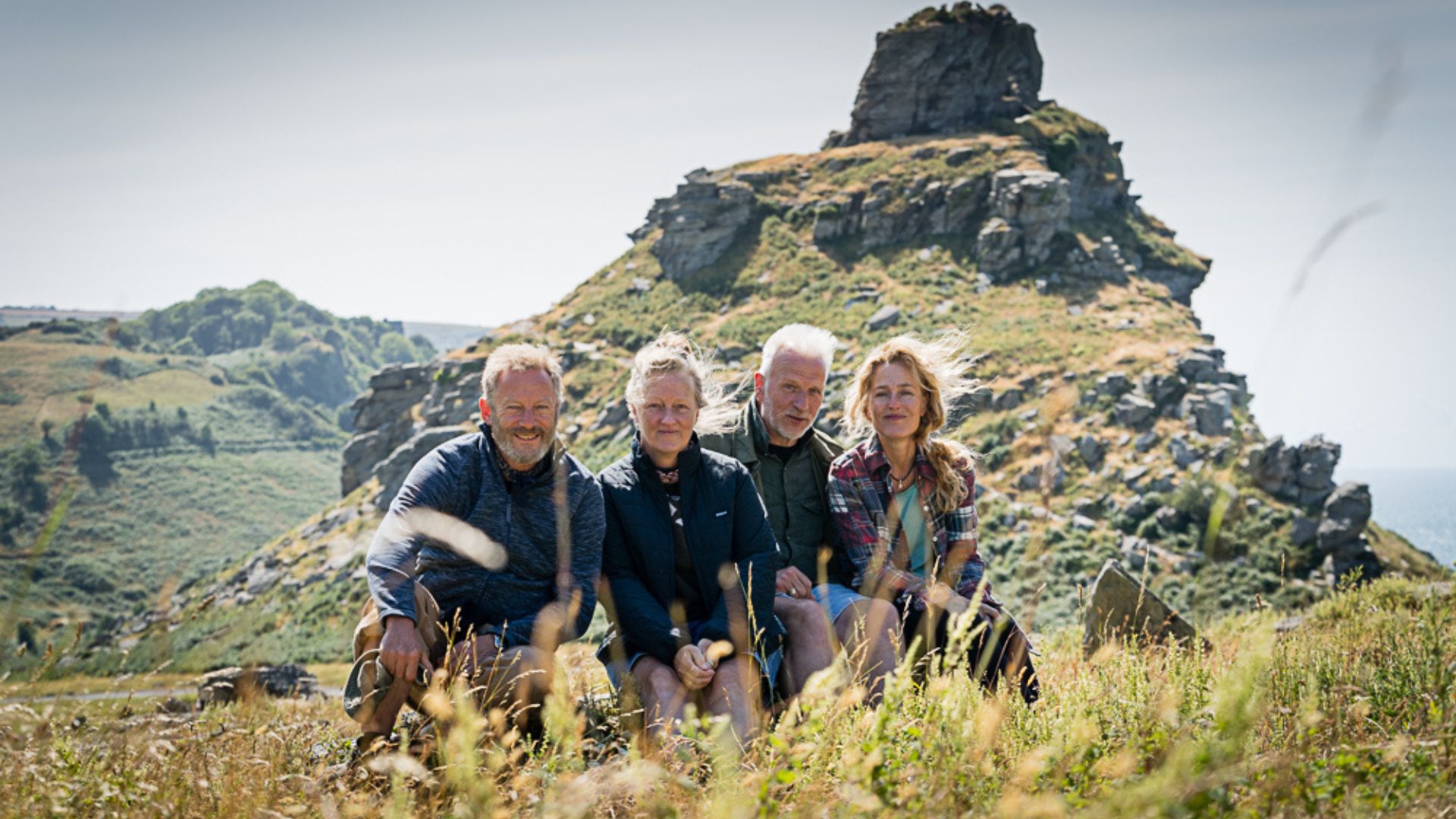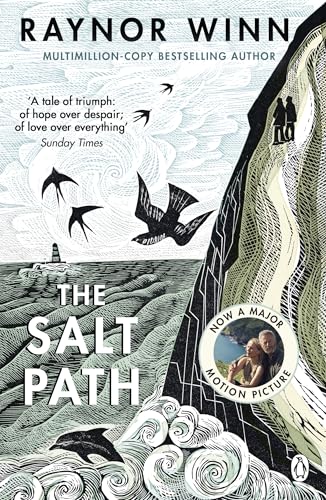'It felt like a lifeline' - author Raynor Winn on the unexpected perks of walking The Salt Path
Ahead of The Salt Path, starring Gillian Anderson and Jason Isaacs, being released into UK cinemas this weekend, Raynor Winn speaks to woman&home


Author and long-distance walker Raynor Winn was in her garden when she received a phone call to say Gillian Anderson would be playing her in the adaptation of her bestselling memoir, The Salt Path.
“For a moment, I was just thinking, wow, how can that be? She's so gorgeous, so glamorous. How could she possibly play me at my rawest? But when it came to meet her on set, I realised she had absolutely thrown herself into the role and scruffed up quite well. She’s done a fantastic job of expressing the most difficult moment in my life,” Raynor, now 63, tells me.
Raynor is referring to 2013, the year she and her husband, Moth, a man she has known since she was 18, were made homeless and he was diagnosed with a terminal condition.
In desperation and at a loss about how to move forward, they decided to walk the South West Coast Path, which stretches 630 miles from Minehead in Somerset to Poole in Dorset via Devon and Cornwall. They wild camped each night, hoping that a new path would emerge. The story is a celebration of nature, of being free of life’s materialistic burdens, and the life-changing power of hiking - of simply putting one foot in front of the other.
Ahead of The Salt Path's release into UK cinemas this weekend, Raynor Winn speaks to woman&home about how the book came to be, why walking was the best "distraction therapy" for menopause, and crafting her story with Gillian Anderson.
A post shared by Black Bear UK (@blackbearuk)
A photo posted by on
From page to screen
“When I met Marianne [Elliott, the director], I had every confidence she would be able to take that story, which is really just a story of two people and a path, and form it into something that an audience could travel on,” says Raynor.
The Salt Path actually began in rudimentary note form, and originally, Raynor had never intended for her story to be made public. She had gathered the notes as a birthday gift for Moth. It was their daughter who persuaded her to turn them into a book, which was published in 2018. It sold over a million copies worldwide and remained on The Sunday Times bestseller list for two years.
Sign up to our free daily email for the latest royal and entertainment news, interesting opinion, expert advice on styling and beauty trends, and no-nonsense guides to the health and wellness questions you want answered.
“I think Gillian had read the book and been moved by the thought of what we do when everything falls apart, and how we stand up again. I think it was that concept really that drew her to the story," says Raynor.
The two spent the day together before filming to prepare Gillian for the role. "We ate ice cream, went through all the little day-to-day stuff of camping and talked about the real emotions behind moments in the film," she tells me.
How it all began
It was a misjudged investment and financial dispute with a former friend that led to an exhaustive and lengthy court battle for Raynor and Moth. A court battle that concluded in them losing their farm in Wales, a place they had lovingly restored over the decades, and where they had brought up two children. That very same week, Moth, depicted by Jason Isaacs in the film, was diagnosed with Corticobasal Degeneration (CBD), a rare and degenerative brain disease for which there is no known cure.
“With Moth’s diagnosis on top of the homelessness, it was as if life had become a void where all the framework of everything we'd spent 20 years building had disintegrated and we didn't know how to move forward, even into the next day,” says Raynor.
They were crouched under the stairs as the bailiffs banged on the door when she spotted a book in one of the packing boxes. It was called Five Hundred Mile Walkies, about a man, Mark Wallington, who had walked the South West Coast Path with his dog.
"We didn't know how to move forward, even into the next day"
It was an unexpected guiding light, one that prompted them to embark on a journey that would impact them in the most profound ways, mentally, physically and emotionally.
“We knew that when we stepped out of the door, we would become homeless, so in that moment, it just seemed like the most obvious thing to do, to put a rucksack on our backs, follow a line on the map and just walk. It felt like a lifeline,” says Raynor.
In that moment, she recalls turning to Moth and saying, "We could just walk."
As she recounts in The Salt Path, at that point, it "seemed such an idyllic prospect", little realising how relentless the walk would be.
Surviving day to day
Given the circumstances, you might think the moment they set off from Minehead on August 13, 2013, was one of heightened emotion. In reality, “we felt slightly ridiculous,” admits Raynor.
“We walked through crowds of people eating ice cream, and then we saw the path, which went up a really steep cliff right from the off. We had our doubts we could even manage the first 400 metres, but it was like, well, we've got nothing better to do, so we might as well walk.”
In the following months, they encountered the beauty and ruggedness of the famous coastal path, and a kaleidoscope of elements and characters.
“We really didn't plan because we didn't have any money to plan with [they got £48 a week in tax credits], so it was very much a question of surviving on a day-to-day basis. But there was something really empowering about simply taking the next step, physically as well as mentally, of simply standing up in those really desperate moments in life, and focusing on getting to the next headland, or across that next beach.”
Forging a future
Neither Raynor nor Moth could have predicted just how seminal the experience would be.
“I remember writing in the book, it felt as if we started that walk with rough, jagged stones in our pockets, emotionally, and by the end, they were like seaworn pebbles, as if that walk had smoothed out all those awful emotions of anxiety and fear and bitterness," she says.
"It was not as if we would ever forget the toughest experiences and emotions, but the path allowed us to find a way to live with that alongside us, rather than defining us, and that was probably the most powerful thing to come from that walk."
That, and the fact that Moth’s condition not only stabilised but improved, baffled doctors. “What we’d been led to understand about his condition was that it couldn't improve, so to find his health did improve as we walked felt almost impossible, like a miracle,” says Raynor.
"That walk had smoothed out all those awful emotions of anxiety and fear"
Their ‘salted’ journey ended when a woman they got talking to in a cafe offered them her cottage to rent in Cornwall. By then, Moth had decided to study for a horticultural degree, something he had always wanted to do, but didn’t think he would have the opportunity to complete. The student loan helped with expenses. An actual base also meant Raynor could look for a job and focus on her writing.
It was a future to look forward to, one they could never have imagined when they first embarked on the Salt Path.

Raynor and Moth walked for around 100 days along the coastal path across two summers, finishing in Polruan, Cornwall.
Meant to be
These days, Raynor lives in west Cornwall with Moth and has since written a further two memoirs, The Wild Silence and Landlines, with another book due to be published this autumn. She is also a notable public speaker, not only in literary circles but as a voice for the homeless.
In quieter moments, she must wonder whether it was all meant to be?
“I'm not a person of any religious belief at all, but there was a moment when we were walking, when we camped in a little meadow by a wood in early summer. I remember getting out of the tent when all the ladybirds were hatching out at the same moment. There were thousands of ladybirds just crawling up me, crawling up my arms and taking off. Something in that moment felt like this was meant to be. I was meant to be on the path, meant to be there at that time, that I am where I should be, and it still feels like that.”
New possibilities
Reflecting on her journey so far, Raynor remarks: “How often in life do you get that chance to just stop everything, stop every single part of your life and reinvent it? We don't do it because we build our lives around our material things, and those material things need sustaining in some form or another, and that's the shape of the lives we build.
“I wouldn't voluntarily have let that go, not for anything, because it was what we spent so long building, but when it was taken in that way, and I had the space to rebuild a life. There was incredible freedom in that.”
It is little surprise to hear Raynor is often approached by people who inform her that The Salt Path changed their life.
“But books don't change your life," she says. "It just gives you another way of looking at the possibilities. Only you can change your own life."
"I could write an entire book about distraction therapy for menopause"

Raynor and Moth, sitting with Gillian Anderson and Jason Isaacs, who play the couple in the film.
The power of walking
The book, and now the film, is a reminder of the restorative potential of walking. Even an early morning walk or gentle amble after eating can improve your mental and physical wellbeing.
“When we walked that path, I was just walking through the menopause, and it was the last thing on my mind, so I could write an entire book about distraction therapy for menopause,” says Raynor, who is still a keen walker and embarked on a long distance solo walk in the north of England earlier this year.
“Walking allows us to let things go. We can start out thinking we’re going to think things through and we're going to work things out, but as you walk, and the further you walk, it's as if all that tangle of life starts to smooth out. And I think a lot of us, as we age, really need that space to look at ourselves in a different way,” says Raynor.
“It is really easy, the older we get, to think it's too late to change, too late to achieve those goals, too late to try to look for a different way, but it is never too late. Every day, we have to get up and see what we can embrace that day.”
A journalist with two decades of experience, Susan interviewed A-list names in film and TV before going freelance and focusing on health, wellbeing, and lifestyle features. She has since spoken to world-renowned experts on the most innovative and effective ways to look after your mind and body; her work appearing in publications such as Daily Express, Daily Mirror, Metro, Fabulous and The Telegraph. When Susan isn’t working on her laptop, she is most content hiking in the Peak District or finding quiet camping spots to while away a weekend and knows first-hand the restorative benefits of being outdoors.

